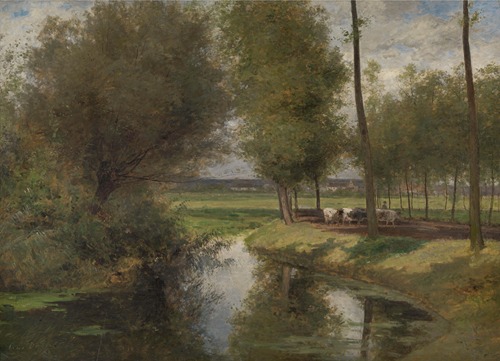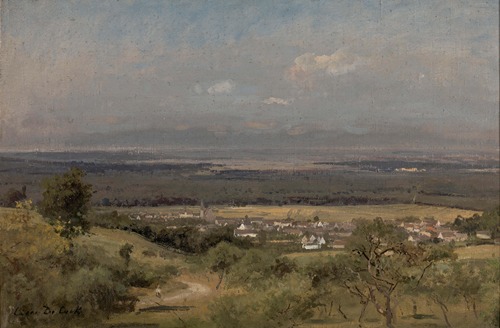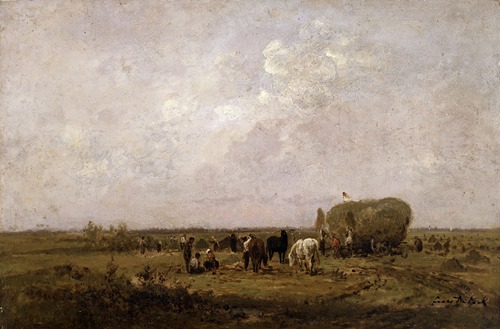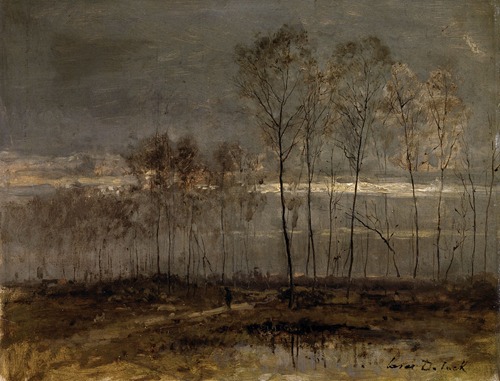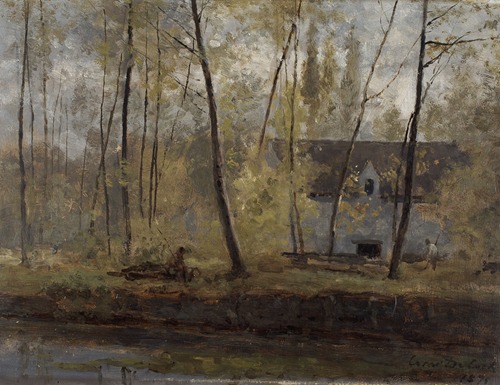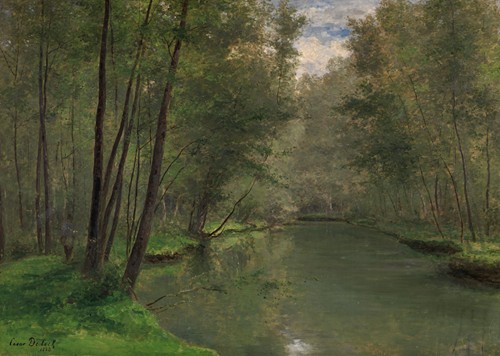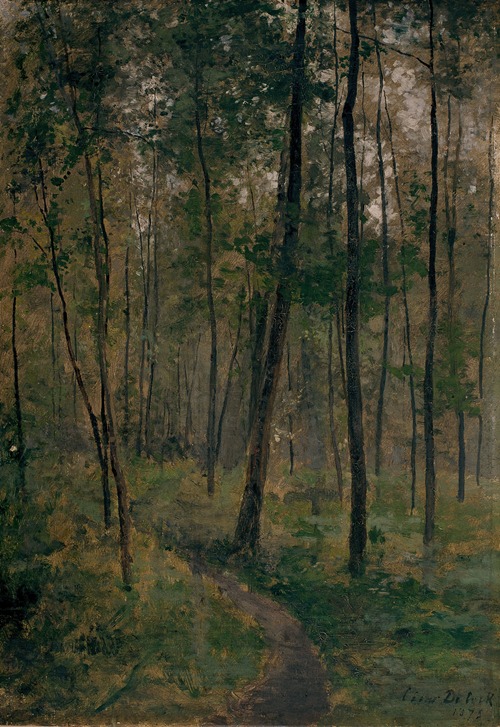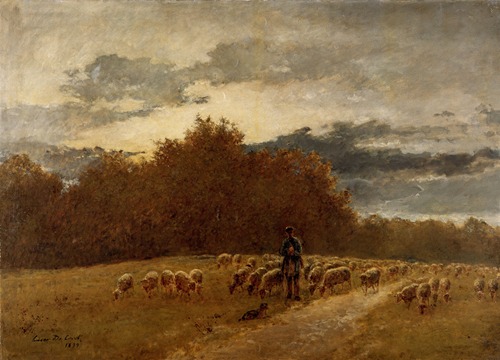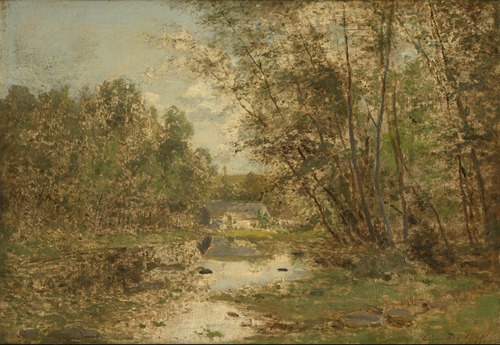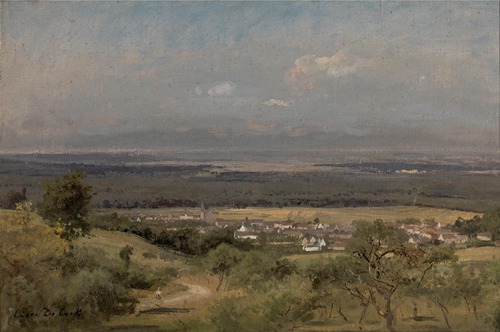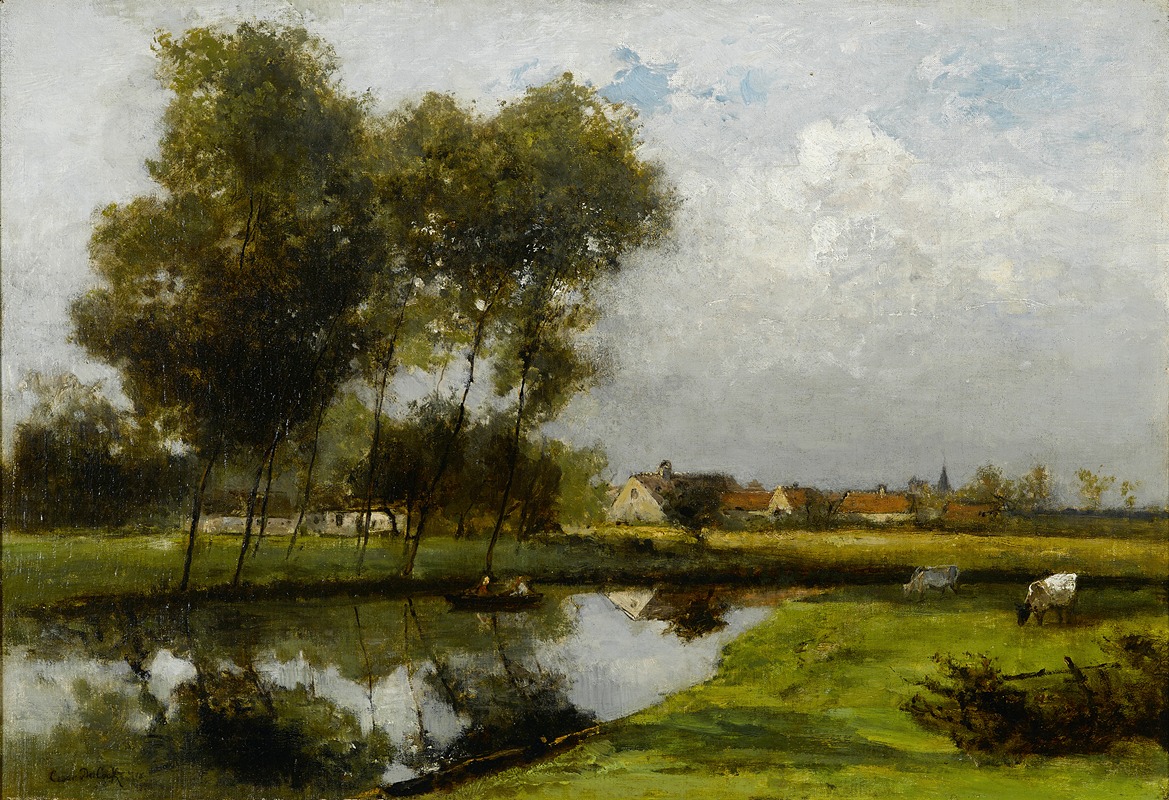
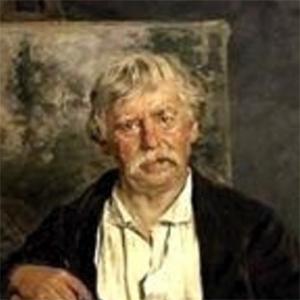
César De Cock, born on July 23, 1823 in Ghent, where he died on July 16, 1904, was a Belgian painter and engraver active in France.
Son of a small tailor in Ghent, younger brother of Xavier De Cock, and a pupil at the Ghent School of Fine Arts, he first devoted himself mainly to music and singing, before becoming deaf and devoting himself exclusively to painting. Called to France by his brother Xavier, he became a pupil of Daubigny and Louis Français.
A painter of genre scenes, still lifes, animals, landscapes and watercolors, César De Cock befriended Corot, Rousseau, Diaz and Troyon.
Soon the De Cocks, simple folk, hard workers and good companions, were admitted to Paris by official exhibition organizers and dealers alike, as if they were native Frenchmen. Art critic Bourgeat noted that "César is to Corot what Xavier is to Daubigny". The former is finer and more poetic than the latter, and the latter is firmer, warmer and more vigorous than the former. Edmond About would say that Daubigny and Corot should see in César and Xavier De Cock "not copyists but inspired comrades in arms". Corot called César "his youngest child". Théophile Gautier devoted one of his sonnets to La cressonnière, a painting by César De Cock that attracted considerable attention at the 1886 Salon.
He spent a short period in Paris, then moved to Gasny in the Eure region. He participated regularly in the salons, notably in Paris, where he won medals in 1867 and 1869. His travels took him to Barbizon from 1860, Veules-les-Roses, the Meudon woods and the Lys region.
During the 1870 war, he took refuge in Deurle, which he left as soon as the conflict was over. In 1880, he settled permanently in Ghent, but frequently painted on and around the banks of the Lys.
The influence of his master Edmé-François Daubigny and Louis Français can be seen in his landscapes, as well as Hobbema's taste for forests with their nuanced greens, while drawing closer to Impressionism.
César De Cock influenced many painters, including Vincent van Gogh, who explicitly named him in letters to his brother Theo.
He is exhibited in most of the world's major museums, including the Musée du Louvre in Paris, the Rijksmuseum in Amsterdam, the Prado in Madrid, the MET in New York and the Victoria and Albert Museum in London.
In 1900, he was appointed Officer of the Order of Leopold.

